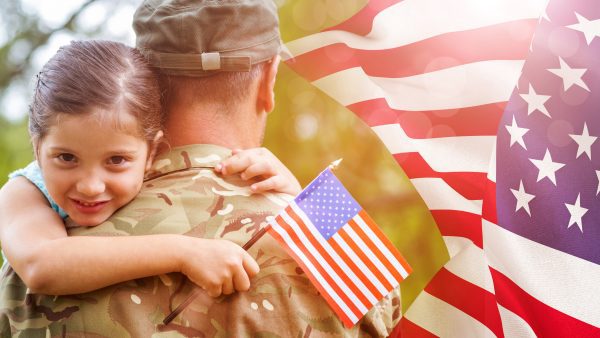Looking for Expert-Level VA Claim Answers?📱Call Us Now! 737-295-2226
This guide will examine the three key things you need to prove service connection to the VA.
There are multiple ways to prove your disability is connected to your time in the military. Service connection is needed to get the VA disability benefits and compensation you deserve for your conditions.
This guide will help you understand how to connect your disability with your time spent on active duty. It can be difficult to navigate through all of the information, but we are here to help make it easier for you.
Table of Contents

You DESERVE a HIGHER VA rating.
Take advantage of a VA Claim Discovery Call with an experienced Team Member. Learn what you’ve been missing so you can FINALLY get the disability rating and compensation you’ve earned for your service.
3 Key Things Needed to Prove Service-Connected Disability
To prove a service-connected disability, veterans must provide documentation of the following three things:
- A current diagnosis of an identified disability;
- An in-service event, injury, or illness that caused or aggravated the disability;
- and a medical nexus (or link) between the present condition and the incident.
The Veterans Benefits Administration (VBA) will also consider secondary service connection if a veteran’s service-connected disability causes or aggravates an existing condition.
To prove VA service connection on a secondary basis, veterans must provide evidence of:
- A primary VA service-connected disability;
- An additional diagnosis of a non-service-connected disability; and
- A medical nexus linking the two conditions.
What is a Service Connected Disability?
A service-connected disability is any condition or injury incurred or aggravated during active military service.
It can include physical injuries, mental health conditions, and chronic illnesses. Service-connected disabilities are assigned a severity rating by the VA, determining the VA disability compensation a veteran will receive.
The VA also offers many services and programs to help veterans with service-connected disabilities, including medical care, vocational rehabilitation, and housing assistance.
For many veterans, receiving compensation and assistance for a service-connected disability can be a lifeline. It can help them cover treatment costs and make it possible to live a meaningful and productive life.
5 Types of Service Connection
Direct Service Connection
Veterans who served in the active military, naval, or air service and who have a disability that resulted from an injury or disease incurred in or aggravated during such service may be eligible for veterans’ benefits.
Direct service connection is the most common type of VA service connection. When a veteran files a claim for benefits, the VA will determine whether the veteran’s current disability is related to their military service.
Service Connection Due to Aggravation
The best evidence to show an aggravation is usually medical records from before and after the veteran’s active duty service.
If the records do not exist or are unavailable, then testimony from the veteran and lay witnesses can be used. Although lay testimony cannot establish a diagnosis, it is important to note that it can be used to prove symptoms and how they changed after service.
An example of this would be if a veteran had knee pain before service but did not seek treatment, and then after service, the pain increased and required treatment. In this instance, they could use lay testimony to corroborate the veteran’s testimony that their knee pain increased after service and became unbearable, leading to a doctor’s appointment.
Secondary Service Connection
To receive disability benefits, veterans must first prove that their condition is related to their military service. For some conditions, this cannot be easy to do. However, another way to receive VA benefits is known as secondary service connection.
Secondary service connection occurs when a veteran’s service-connected condition causes or aggravates another secondary condition unrelated to the veteran’s military service.
To receive secondary service connection, veterans must provide evidence showing that their current condition results from their service-related condition. It can be difficult, but it is important to remember that the VA will consider all evidence you provide. If you are unable to obtain the necessary evidence on your own, the VA may be able to help you obtain it.
-
Related: What are VA Secondary Conditions?
Presumptive Service Connection
In some cases, the VA will presume that a veteran’s condition is service-connected. Presumptive service connection means that the VA does not require evidence linking the veteran’s current condition to their military service.
The VA does this because of the unique circumstances of certain veterans’ military service. For example, if a veteran was a prisoner of war, the VA assumes that if they have a diagnosis of psychosis, dysthymic disorder, or several other conditions, the circumstances of his/her service caused the condition, and disability compensation can be awarded.
A full list of circumstances to which the VA applies presumptive service connection is available in this fact sheet.
-
Related: What are VA Presumptive Conditions?
Diagnosed Disabled During VA Medical Treatment
Veterans who become disabled while they are under the care of the VA may be eligible for service-connected disability benefits. There are a few ways to prove that your disability is service-connected, but the most common is to show that it began during your VA medical treatment.
To do this, you will need to provide records from your VA medical treatment and any private medical records that predate or postdate your VA treatment.
Gathering as much evidence as possible before submitting your claim is important. Once you have gathered your records, you must submit them to the VA for review. The VA will then decide as to whether or not your disability is service-connected.
If you are found to be eligible, you will begin receiving benefits immediately. If you are denied benefits, you may appeal the decision. However, it is important to note that the burden of proof is on the veteran to show that their disability is service-connected.

What Documents are Required to Support My Claim?
When you file a VA disability claim for benefits, you must provide evidence to support your claim. The type of evidence required will vary depending on the nature of your claim. Still, some general categories of evidence are often used to establish a VA service connection.
Military records are one of the most important types of evidence that you can use to support a VA benefits claim. These records can help to establish dates and locations of service, as well as any injuries or illnesses incurred during military service.
Other types of relevant evidence include medical records, witness statements, and Independent Medical Opinions and Nexus Letters.
In some cases, additional types of evidence may also be required.
Can I Prove a Service Connection Without Service Treatment Records?
Although service treatment records are the best way to establish a link between your current disability and your time in service, there are other ways to get benefits, even if you don’t have these records.
You may be able to use lay evidence or testimony from yourself and people who know you to establish a connection between your current disability and an incident that happened during your service.
For example, suppose you have PTSD and can’t find your service treatment records. In that case, you might be able to get benefits by providing testimony about the traumatic event that caused your PTSD, along with testimony from people who saw the event happen or who know about your diagnosis.
Related: Overcoming Lost Military Medical Records 30 Years Later
How Much Does the VA Pay for Service-Connected Benefits?
The amount of money a veteran receives is determined by the severity of his or her disability, with greater payments made for more serious conditions.
In addition to compensation, veterans with service-connected disabilities are also eligible for health care, vocational rehabilitation, and other benefits. The VA also provides survivor benefits to the families of Veterans who die due to their service-connected disabilities.
While the number of benefits paid by the VA can vary depending on the individual veteran’s situation, the VA provides significant financial assistance to veterans with service-connected disabilities.

VA Disability Rates 2025
See 2025 VA Disability Rates and Pay Charts here.
The VA adjusts VA compensation rates yearly based on the increase in the Social Security Administration’s (SSA) Cost of Living Adjustment (COLA).
The final VA disability rates for 2025 will be officially released in October 2024, based on the Bureau of Labor Stat Administration‘s September 2024 inflation data.
Veterans receiving VA disability compensation can expect their benefits to increase in December 2024.
You can book a FREE no-obligation Discovery Call today: Book my FREE Discovery CALL.

Can the VA Take Away My Service Connection?
Once a disability has been service-connected, the VA will periodically review the veteran’s file to ensure they still meet the eligibility criteria.
If the VA finds that a veteran’s condition has improved to the point where they are no longer disabled, they may decide to discontinue their benefits. It can be a frustrating experience for veterans.
If you are concerned that they may discontinue your benefits, it is best to speak with a qualified VA expert.
We hope this guide has been helpful. We’re VA insiders here to walk you through everything you need to know. Remember, if you have any questions, we encourage you to contact us for support.
(FAQs) Frequently Asked Questions
What Qualifies as a Service-Connected Disability?
A service-connected disability is defined as an injury or illness that was caused or aggravated by military service.
Disabilities can be physical, mental, or emotional, resulting from an injury, disease, or long-term exposure to hazardous conditions.
To receive benefits, a veteran must first file a claim with the VA, which will review the claim and determine whether the veteran meets the requirements for benefits.
Is VA Service-Connected Disability a Lifetime Benefit?
Veterans with a service-connected disability are eligible to receive lifetime benefits, including monthly payments, healthcare, and education assistance.
To receive these benefits, veterans must first submit a claim to the VA. The VA will review the claim and determine if the veteran is eligible for benefits. If the claim is approved, the veteran will begin receiving monthly payments.
In addition, the VA will provide the veteran with access to healthcare and education assistance. Veteran benefits are available to all veterans with a service-connected disability, regardless of when they served. As such, a VA service-connected disability is a lifetime benefit.
What Are the Most Common Service-Connected Diseases and Disabilities?
According to the VA’s Annual Benefits Report, the most common service-connected disabilities are Tinnitus, Hearing loss, Limitation of flexion, knee, Post-traumatic stress disorder, and Lumbosacral or Cervical Strain, among others.
These disabilities can be caused by various factors, including exposure to loud noises, head injuries, and psychological trauma.
In many cases, these disabilities can reduce the quality of life and increase the risk of unemployment.
The VA provides various benefits and services to help veterans cope with their disabilities.
How Do You Prove Back Pain Is Service Connected?
To prove that back pain is service-connected, veterans must first show that they have a current, diagnosed back condition. They must also provide evidence that their back condition began during active military service or was aggravated by their service.
Once it has been established that the back pain is service-connected, the VA will provide benefits to help cover the treatment costs. However, simply having a diagnosis is not enough. Veterans must also demonstrate that their back pain harms their ability to work or participate in other activities. The VA will consider several factors in making this determination, including the severity of the pain, the veteran’s age, and the level of disability.
What Is a Service-Connected Disability Rating?
A service-connected disability rating is a numerical evaluation of the severity of a veteran’s disability, as determined by the Department of Veterans Affairs.
The rating determines the level of benefits a veteran is eligible for and the extent to which the VA will cover the cost of medical treatment. The rating is based on various factors, including the nature of the injury or illness, its impact on the veteran’s ability to work and function daily, and any other disabilities that may be associated with it. The ratings range from 0% to 100%, with higher percentages indicating a more severe disability.
A 100% rating is reserved for veterans unable to work or function independently due to disability. In comparison, a 0% rating indicates that a veteran’s disability has no impact on their ability to work or live a normal life.
Veterans with service-connected disabilities are also eligible for additional benefits, such as tax breaks, housing assistance, and educational opportunities.
Can Inactive Duty Training Be Used to Provide Evidence of Disability?
Veterans with service-connected conditions often face unique challenges when it comes to proving their disability. In many cases, these conditions can be difficult to document and may not be apparent on medical records. As a result, veterans may need to provide additional evidence to prove their condition. One way to do this is through inactive duty training (IDT).
IDT is a type of military training for reserve and national guard soldiers. However, you can use it to provide documentation for a veteran’s service-connected condition.
Suppose a veteran’s service-connected condition makes it difficult for them to participate in regular military training. In that case, IDT can provide an alternative way to maintain proficiency and earn promotion points. In addition, IDT can also help veterans keep up with their required annual physical fitness tests. As a result, IDT can be an important tool for veterans trying to prove their service-connected disability.
NEED MORE ASSISTANCE?
Most veterans are underrated for their disabilities and therefore not getting the compensation they’re due. At VA Claims Insider, we help you understand and take control of the claims process, so you can get the rating and compensation you’re owed by law.
Our process takes the guesswork out of filing a VA disability claim and supports you every step of the way in building a fully developed claim (FDC)—so you can increase your rating fast! If you’ve filed your VA disability claim and have been denied or have received a low rating—or you’re unsure how to get started—reach out to us! Take advantage of a FREE VA Claim Discovery Call. Learn what you’ve been missing—so you can FINALLY get the disability rating and compensation you deserve!
About the Author

Trisha Penrod
Trisha Penrod is a former active-duty Air Force officer. As an Intelligence Officer, she led teams of analysts to apply advanced analytic skills to identify, assess, and report potential threats to U.S. forces.
Trisha attended the U.S. Air Force Academy and holds an MBA from Webster University. After receiving an honorable discharge in 2018, Trisha worked as a growth marketer and utilizes her analytic skills to help others accomplish their business goals.




